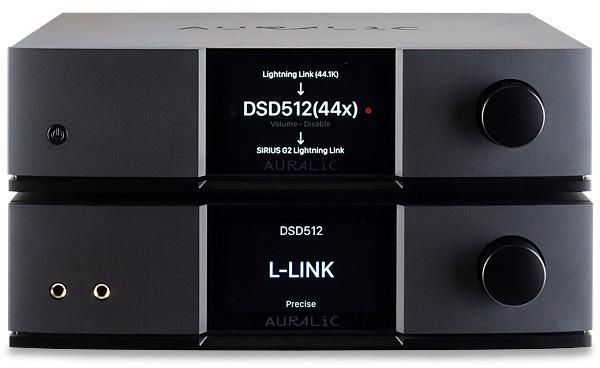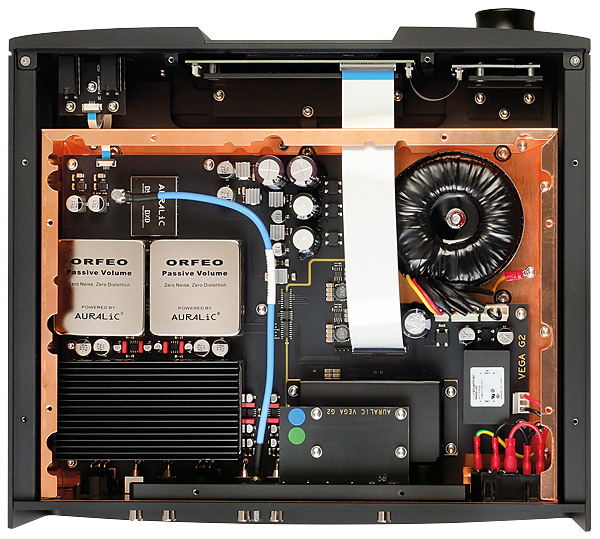Auralic Sirius G2.1/Vega G2.1 Upsampler/DAC

 Auralic's latest streamer/DAC combines with its upsampling processor, and at first glance there seems to be some duplication of effort. So how do they work together?
Auralic's latest streamer/DAC combines with its upsampling processor, and at first glance there seems to be some duplication of effort. So how do they work together?
The trouble with many modern hi-fi ranges is trying to work out what each of the boxes does. I've recounted before the tale of the tower of identical-looking Linn components stacked up in the premium lounge of a well-known airline, and the amusement there was in watching 'elite' passengers trying to work out where to insert their Dire Straits CD. Similarly, Auralic also has a wide range of digital devices, and given that they all look alike, it's sometimes hard to work out what does what.
Things are further confused by the fact many Auralic products are multifunctional. The Vega G2.1 we have here, selling for £6799, may be 'first and foremost a performance-focused DAC' (as the company puts it), complete with a comprehensive suite of inputs including USB-B for computer hook-up, but it's also a network player, interfacing with the company's Lightning DS app to play music from local storage, online streaming services and Internet radio. Via USB-B or streaming inputs, it will accept file formats up to 384kHz/32-bit and DSD512, and it has both XLR and RCA analogue outputs, complete with a volume control if required, and a pair of 6.35mm headphone outputs for personal listening.
Super Slick
Why, then, would you need the Sirius G2.1, at another £6799 – and more to the point, what actually is it? Auralic describes it as an 'Upsampling Processor', able to convert all incoming digital signals in steps up to DSD512 or 384kHz, and then feed them to a DAC via the company's proprietary Lightning Link. But that simple headline description only scratches the surface of what this unit can do. Dig into its menus and you'll discover there's a wide range of resampling options built into the upsampling process, so you could set a different upsampling for just about every digital input format and sampling rate, plus the inevitable choice of digital filters.

There's also – and this is rather more than a mere also – an eight-band parametric equaliser on board, and even adjustments for gain and delay, the latter set by inputting distance, to compensate for the location of your loudspeakers relative to your listening position.
And if you really wanted to go even further, you could add to this duo the £5299 Altair G2.1 streamer [HFN Oct '21], which brings with it the option of internal storage for your music collection as well as the usual ability to stream from network-connected storage. And, as icing on the cake, there's the company's Leo GX.1, an £8799 master clock for the whole system, which will take control of the digital reference for a number of Auralic units.
In practice, a 'solo' Vega G2.1 is a very comprehensive offering in its own right, so if you're purely committed to network streaming, be it from local storage or online services, then it will more than suffice. Moreover, working with the company's super-slick app, and with the bonus of its own suite of digital (and analogue) inputs, it will operate as a hub/preamp straight into a power amp or active speakers, or into a preamplifier.
Earning Its Keep
If, however, you also have legacy digital sources to connect into the system, or want to take advantage of all that equalisation or room correction, then the Sirius G2.1 will start earning its keep, though it should be noted that the addition of the upscaler will have no effect on your network-streamed music. Yes, there's an Ethernet port on the back of the Sirius 2.1, but it's only there for firmware updates and not streaming duties, so the prosaic description is that the upscaler works as a digital switching hub: connecting it to the Vega G2.1 via the Lightning Link disables the streamer/DAC's conventional electrical and optical digital inputs.

Both units are substantially built, with the now-familiar 'copper chassis within an aluminium outer casing' construction of all the latest Auralic models. The Vega sticks with the company's tried-and-tested platform seen in the Aries G2.1 [HFN Feb '21] and Altair G2.1, with an Auralic-modified ESS Sabre DAC combined with its proprietary Orfeo analogue stage, including passive volume, and that line input. With so much capability here, I confess that it took me a while to work out how to set it all up, and make valid comparisons between the Vega G2.1 alone, and the streamer/DAC with upscaling processor added.
I ended up switching between my MacBook Air connected direct via USB to the Vega G2.1, and then via the Sirius G2.1, and doing the same with the digital output of my Naim network player. As ever I played with the digital filters of the Sirius, came to no conclusive findings, so then ignored them, sticking to the 'smooth' option for all my listening. Of more interest were the equaliser and speaker correction settings: having hefted my speakers into obviously wrong positions, it was impressive that I was able to get them back to sounding correct, which bodes well for those whose living space dictates sub-optimal positioning.
![]() Super Rich
Super Rich
Trying a wide range of music sources and formats, what immediately became clear was that, while playing music into the Vega G2.1 directly at high resolutions showed no advantage with or without the Sirius G2.1 in the chain, lower-resolution file formats showed enhanced air, space and detail with the upscaler activated. For example, playing the 320kbps Radio 3 HD stream of Proms concerts sounded richer and more substantial, with an overall greater sense of involvement when played from my laptop via the Sirius when compared to using the Vega G2.1's Internet radio capability.

























































